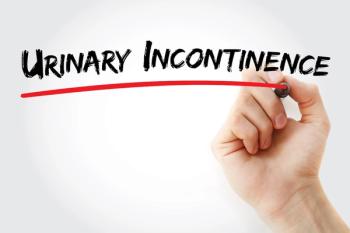
Most-Read AJAC Papers of 2021
The most-read AJAC papers of 2021 analyze real-world programs to transform health care and provide insight into physician perspectives of health care and insurance.
The American Journal of Accountable Care® (AJAC) strives to be an outlet for publishing real-world programs that document what health systems, practices, and accountable care organizations (ACOs) are doing to transform health care delivery and improve the quality of care, as well as frontline perspectives on the transformation to value-based care.
This year’s most-read papers included what one payer is doing to transform specialty care, how an ACO is increasing adoption of Medicare’s annual wellness visit, and a survey of physician perspectives.
In 2021, AJAC refreshed its board to include some past authors, including 2 who published papers that made it into the top 5.
5. Physician Perspectives: How the Merit-based Incentive Payment System Improves Value
New AJAC board member Leah Marcotte, MD, coauthored this paper on physician perspectives on how the Merit-based Incentive Payment System (MIPS) domains drive value. There are 4 domains of MIPS: quality, improvement activities, promoting interoperability, and cost.
Through a national web-based physician survey, the authors asked physicians who believed the MIPS domain activities improve value what mechanisms would drive those improvements. Most believed the improvements would occur through process improvement activities rather than other forms of quality, patient experience, or cost containment.
4. More Than “Beating the Benchmark”: 5 Medicare ACOs, 2015-2019
In another study coauthored by a new AJAC board member, Travis Broome, MPH, MBA, and colleagues from Aledade compared the results of 5 Medicare Shared Savings Program ACOs with both ACO benchmarks and regional comparators over 4 years.
They found that the 5 ACOs prevented an estimated 10,917 hospitalizations, 19,338 emergency department visits, and 8859 skilled nursing facility visits compared with the region. In addition, they noted that improvements in care transitions and preventive care, such as annual wellness visits (AWVs), drove the success of these ACOs compared with the region.
3. Applying Upstream Problem-Solving to Value-Based Payment Reform in Specialty Care: Blue Cross Blue Shield of North Carolina’s Approach
Authors outline the importance of improving the health care system to moving to an upstream problem-solving approach, as Blue Cross Blue Shield of North Carolina (Blue Cross NC) has been working to do. The authors discuss how to apply an upstream problem-solving approach specific to value-based payment reform and its challenges. Specifically, they discuss how Blue Cross NC is actively working to overcome barriers to achieving upstream transformation for specialty care.
2. Increasing Medicare Annual Wellness Visits in Accountable Care Organizations
The purpose of the Medicare AWV is to allow providers to focus on preventive care for eligible beneficiaries, but adoption has been slow since its introduction in 2011. However, when a large Medicare ACO implemented several changes to decrease barriers to scheduling and increase the efficiency and convenience of these visits, there was a substantial increase in rates within 12 months.
Improving AWV rates may reduce health care spending for higher-risk patients, and a telehealth visit may be substantial enough for the visit, the authors noted.
1. Doctors Hate Deductibles: Physicians Pay Thousands to Avoid High Deductibles
High-deductible health plans (HDHPs) offer lower monthly premiums in exchange for higher deductibles and use cost sharing to reduce unnecessary health care utilization. A cross-sectional analysis of plan selection of nearly 1400 physician employees at a large health system found nearly 90% of physicians did not choose an HDHP and spent thousands of extra dollars per year.
The authors highlighted the lack of understanding about the potential benefits of HDHPs. According to the study, enrolling in an HDHP would have saved these physicians between $1451 and $3851 in combined premium plus out-of-pocket costs. As result, the authors concluded that “even highly educated health care professionals who understand health insurance will pay thousands in extra premiums to avoid deductibles.”
Newsletter
Stay ahead of policy, cost, and value—subscribe to AJMC for expert insights at the intersection of clinical care and health economics.





























































